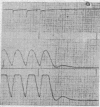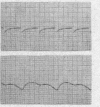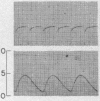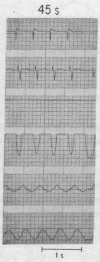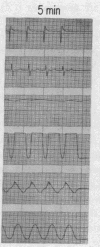Abstract
Recovery from hypoxia has been shown to prolong cardiac muscle contraction, particularly the relaxation phase. The present studies were designed to examine whether incomplete relaxation between beats can result from this prolongation of contraction and relaxation in isolated muscle after hypoxia and in the canine heart after both hypoxia and acute ischemia. The relationship between heart rate and the extent of incomplete relaxation is emphasized in view of the known enhancement of the velocity of contraction caused by increasing heart rate.
The extent of incomplete relaxation during 10-s periods of pacing at increasing rates was examined before and after hypoxia in isometric cat right ventricular papillary muscle (12-120 beats/min) and in the canine isovolumic left ventricle (120-180 beats/min). Incomplete relaxation was quantified by measuring the difference between the lowest diastolic tension or pressure during pacing and the true resting tension or pressure determined by interruption of pacing at each rate. In eight cat papillary muscles (29°C), there was significantly greater incomplete relaxation 5 min after hypoxia at rates of 96 and 120 beats/min (P < 0.02 vs. before hypoxia). In seven canine isovolumic left ventricles, recovery from hypoxia and higher heart rates also resulted in incomplete relaxation. Incomplete relaxation before hypoxia at a rate of 180 beats/min was 0.8±0.5 cm H2O and at 5 min of recovery from hypoxia was 12.6±3.5 cm H2O (P < 0.01). 12 hearts were subjected to a 1.5-3-min period of acute ischemia and fibrillation. There was significant incomplete relaxation at a rate of 140 beats/min for 5 min after defibrillation and reperfusion.
These data indicate that incomplete relaxation is an important determinant of diastolic hemodynamics during recovery from ischemia or hypoxia. The extent of incomplete relaxation appears to be a function of the rate of normalization of the velocity of relaxation and tension development after ischemia or hypoxia, the heart rate, and the magnitude of developed tension or pressure.
Full text
PDF
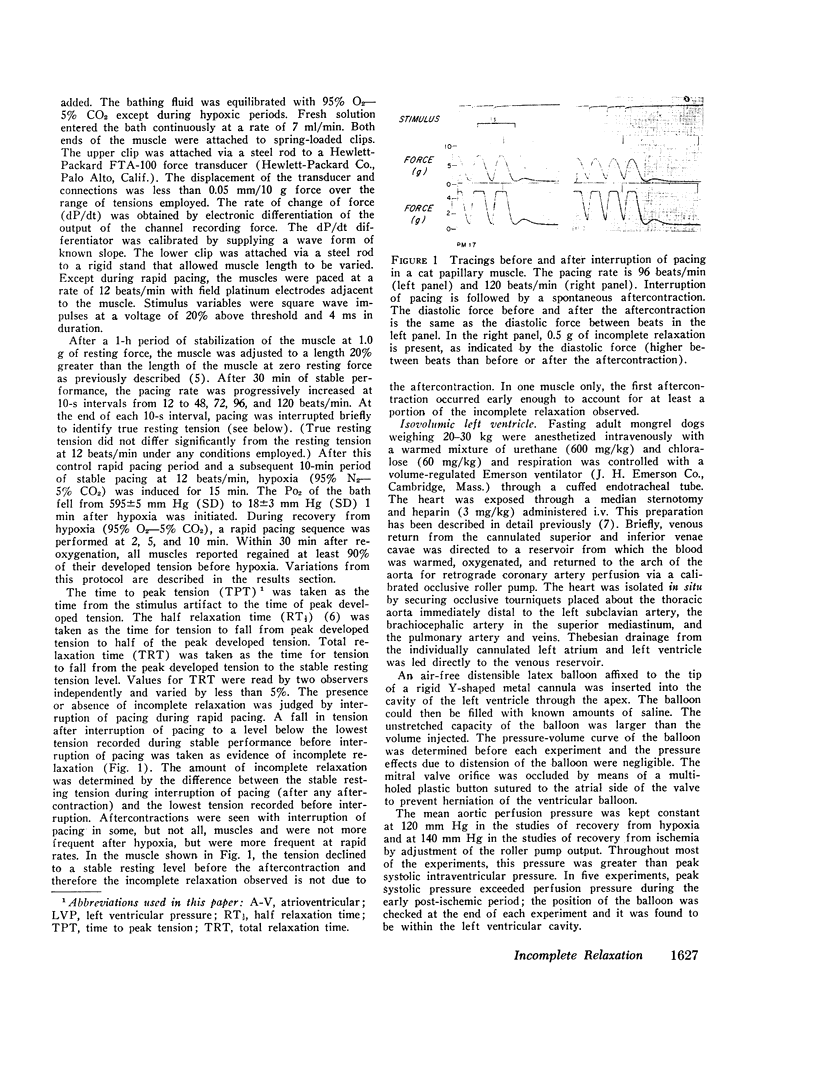
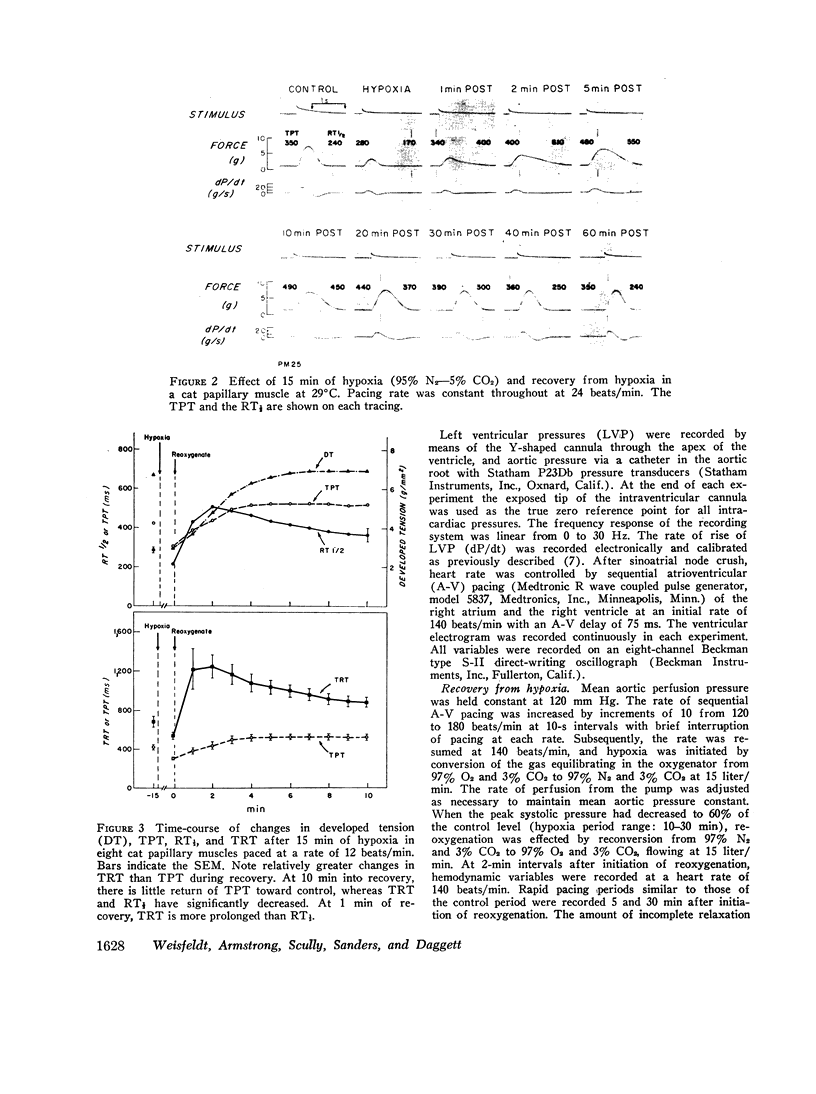

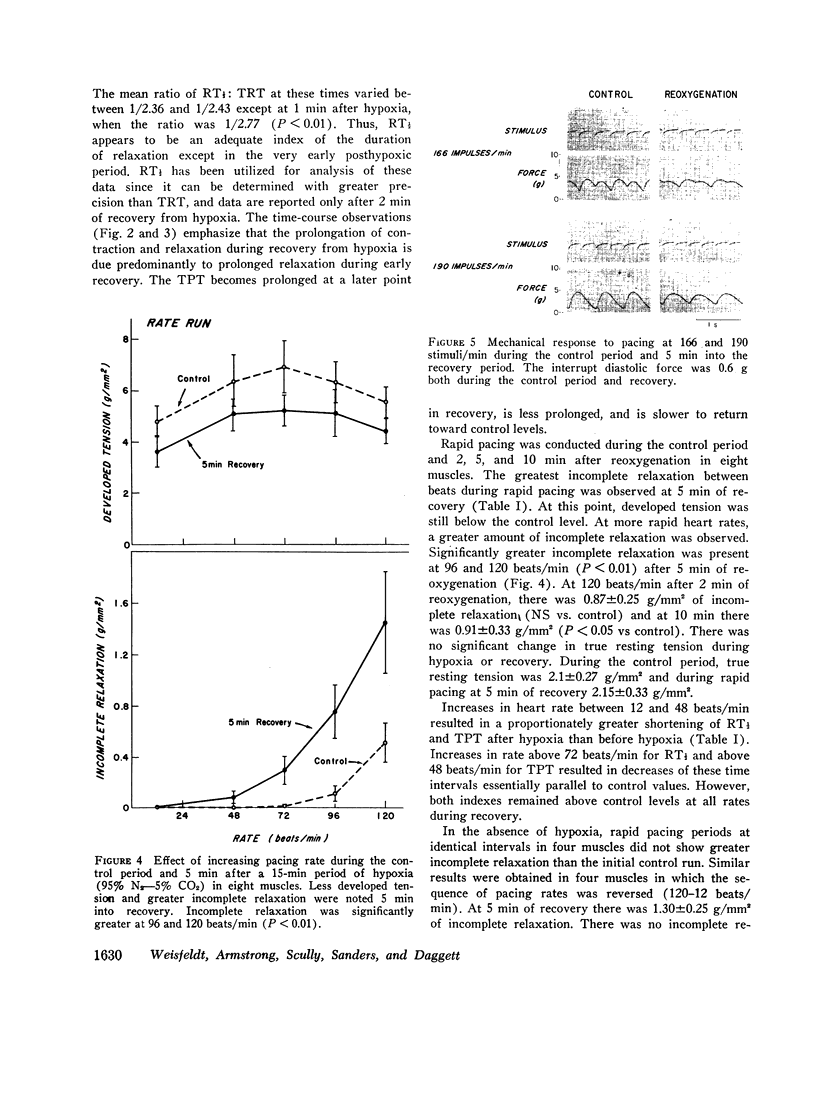

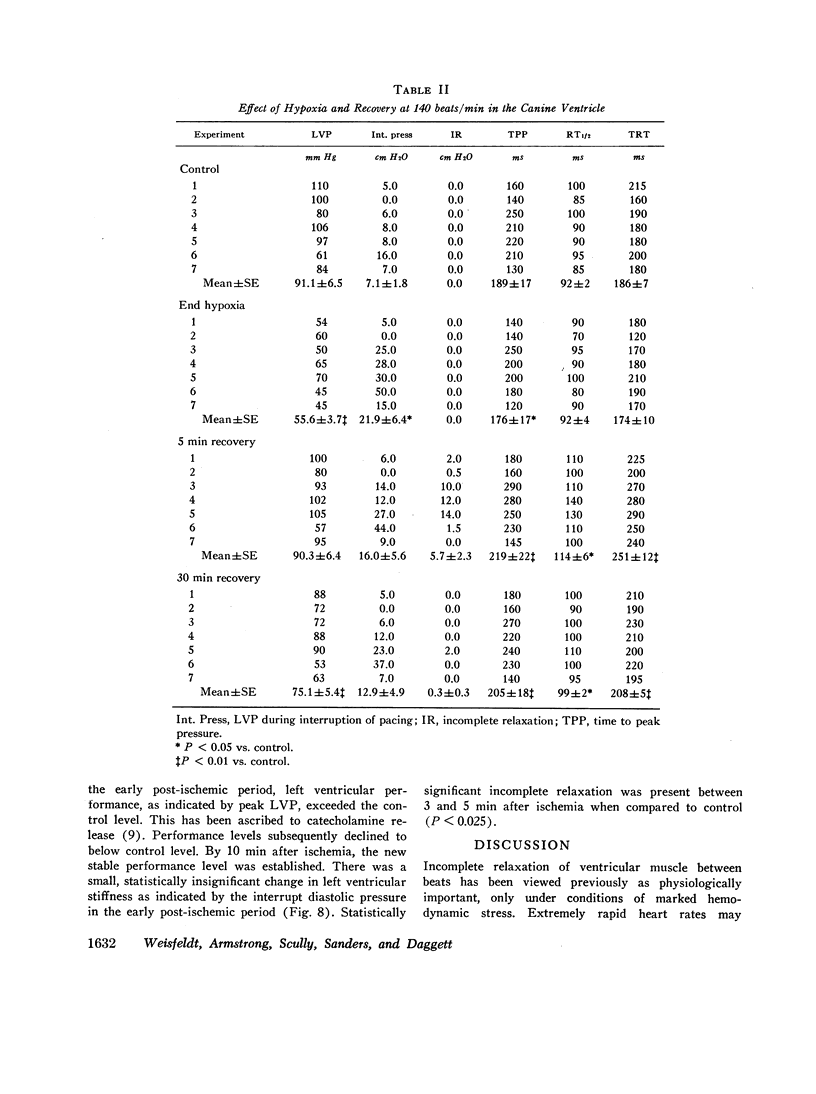
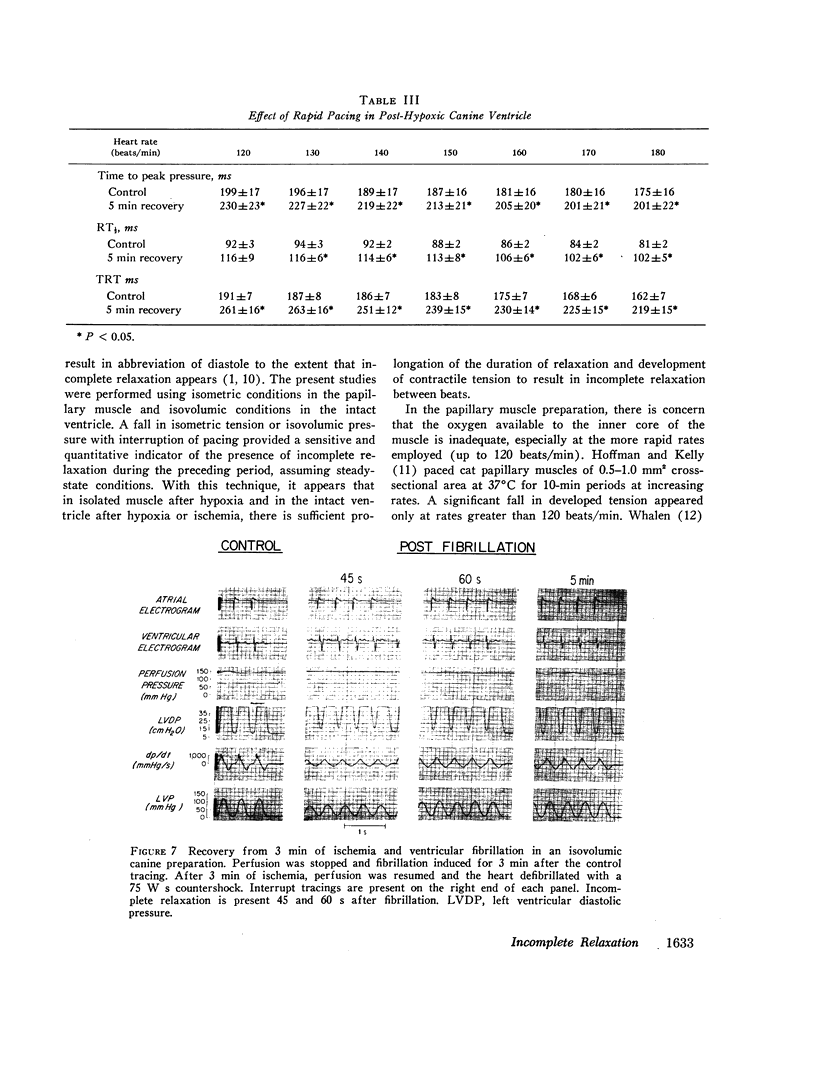

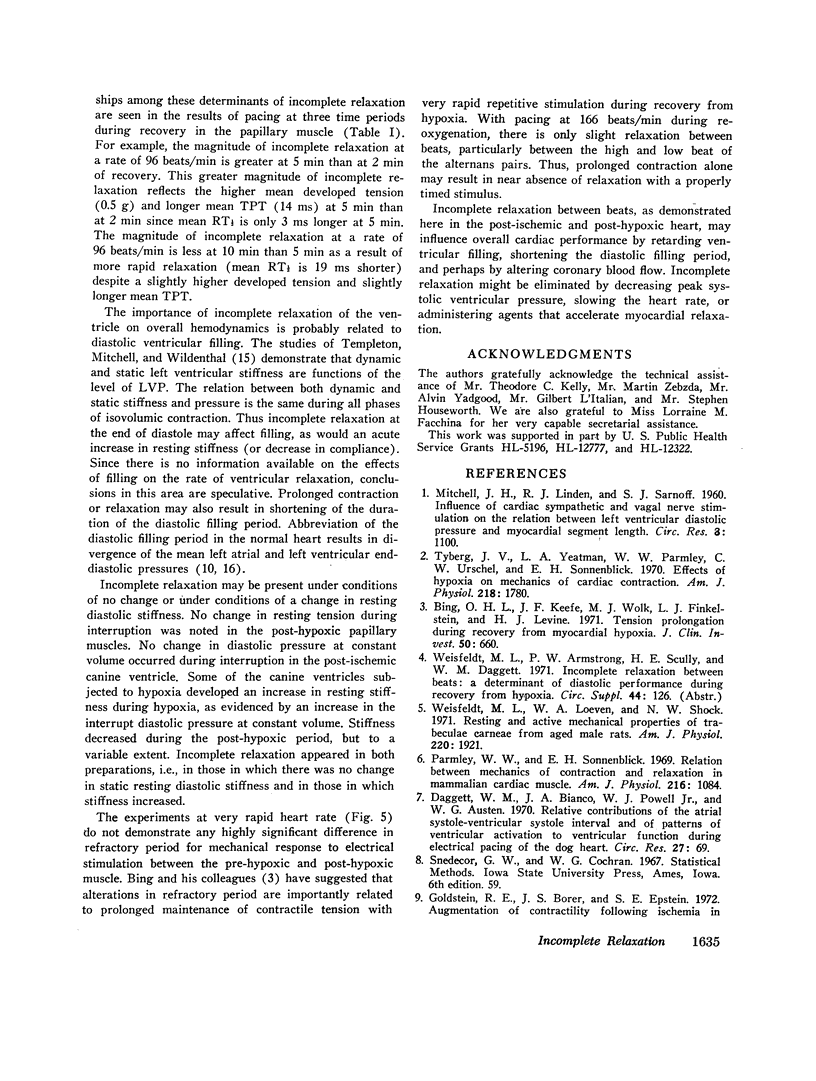

Images in this article
Selected References
These references are in PubMed. This may not be the complete list of references from this article.
- Bing O. H., Keefe J. F., Wolk M. J., Finkelstein L. J., Levine H. J. Tension prolongation during recovery from myocardial hypoxia. J Clin Invest. 1971 Mar;50(3):660–666. doi: 10.1172/JCI106536. [DOI] [PMC free article] [PubMed] [Google Scholar]
- Daggett W. M., Bianco J. A., Powell W. J., Jr, Austen W. G. Relative contributions of the atrial systoleventricular systole interval and of patterns of ventricular activation to ventricular function during electrical pacing of the dog heart. Circ Res. 1970 Jul;27(1):69–79. doi: 10.1161/01.res.27.1.69. [DOI] [PubMed] [Google Scholar]
- HOFFMAN B. F., KELLY J. J., Jr Effects of rate and rhythm on contraction of rat papillary muscle. Am J Physiol. 1959 Dec;197:1199–1204. doi: 10.1152/ajplegacy.1959.197.6.1199. [DOI] [PubMed] [Google Scholar]
- MITCHELL J. H., GILMORE J. P., SARNOFF S. J. The transport function of the atrium. Factors influencing the relation between mean left atrial pressure and left ventricular end diastolic pressure. Am J Cardiol. 1962 Feb;9:237–247. doi: 10.1016/0002-9149(62)90043-7. [DOI] [PubMed] [Google Scholar]
- MITCHELL J. H., LINDEN R. J., SARNOFF S. J. Influence of cardiac sympathetic and vagal nerve stimulation on the relation between left ventricular diastolic pressure and myocardial segment length. Circ Res. 1960 Sep;8:1100–1107. doi: 10.1161/01.res.8.5.1100. [DOI] [PubMed] [Google Scholar]
- Parmley W. W., Sonnenblick E. H. Relation between mechanics of contraction and relaxation in mammalian cardiac muscle. Am J Physiol. 1969 May;216(5):1084–1091. doi: 10.1152/ajplegacy.1969.216.5.1084. [DOI] [PubMed] [Google Scholar]
- Templeton G. H., Mitchell J. H., Wildenthal K. Influence of hyperosmolality on left ventricular stiffness. Am J Physiol. 1972 Jun;222(6):1406–1411. doi: 10.1152/ajplegacy.1972.222.6.1406. [DOI] [PubMed] [Google Scholar]
- Tyberg J. V., Yeatman L. A., Parmley W. W., Urschel C. W., Sonnenblick E. H. Effects of hypoxia on mechanics of cardiac contraction. Am J Physiol. 1970 Jun;218(6):1780–1788. doi: 10.1152/ajplegacy.1970.218.6.1780. [DOI] [PubMed] [Google Scholar]
- Vatner S. F., Franklin D., Higgins C. B., Patrick T., Braunwald E. Left ventricular response to severe exertion in untethered dogs. J Clin Invest. 1972 Dec;51(12):3052–3060. doi: 10.1172/JCI107132. [DOI] [PMC free article] [PubMed] [Google Scholar]
- WALLACE A. G., MITCHELL J. H., SKINNER N. S., Jr, SARNOFF S. J. HEMODYNAMIC VARIABLES AFFECTING THE RELATION BETWEEN MEAN LEFT ATRIAL AND LEFT VENTRICULAR END-DIASTOLIC PRESSURES. Circ Res. 1963 Sep;13:261–270. doi: 10.1161/01.res.13.3.261. [DOI] [PubMed] [Google Scholar]
- WHALEN W. J. Some factors influencing O2 consumption of isolated heart muscle. Am J Physiol. 1960 Jun;198:1153–1156. doi: 10.1152/ajplegacy.1960.198.6.1153. [DOI] [PubMed] [Google Scholar]
- Weisfeldt M. L., Loeven W. A., Shock N. W. Resting and active mechanical properties of trabeculae carneae from aged male rats. Am J Physiol. 1971 Jun;220(6):1921–1927. doi: 10.1152/ajplegacy.1971.220.6.1921. [DOI] [PubMed] [Google Scholar]




